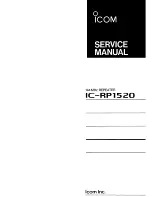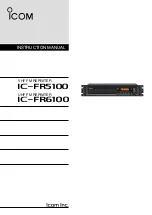
31
CompoNet Networks
Section 2-1
Slave Units
Some Slave Units receive output data from the Master Unit across the Com-
poNet Network and output it. Other Slave Units send data that has been input
across the network to the Master Unit. There are two types of Slave Unit
according to the I/O capacity of the Slave Unit.
• Word Slave Units: A Word Slave Unit is allocated 16 bits (i.e., 16 I/O
points) in the I/O memory of the CPU Unit.
• Bit Slave Units: A Bit Slave Unit is allocated 2 bits (i.e., 2 I/O points) in the
I/O memory of the CPU Unit.
Repeater Unit
Using Repeater Units enables expanding network connections as follows:
• Extending the Communications Cable
• Increasing the number of nodes (Units)
• Creating long-distance T-branches from the trunk line and sub-trunk lines
(See note.)
• Converting between different types of cable (round cable I, round cable II,
Flat Cable I, and Flat Cable II)
A sub-trunk line downstream from a Repeater Unit can be connected with the
same communications specifications (i.e., distances and number of Slave
Units) as the trunk line.
Up to 64 Repeater Units can be connected per network (i.e., per Master Unit).
When Repeater Units are connected in series from the Master Unit, up to two
layers can be created.
Note
The physical layer is not connected across a Repeater Unit. The
connection is thus different from a branch connection, which
branches the same physical layer.
Terminating Resistors
With a CompoNet Network, the Master Unit is located at one end of the trunk
line and a Terminating Resistor is connected to the other end of the trunk line.
If Repeater Units are used, each Repeater Unit is treated like a Master Unit,
i.e., Terminating Resistor is connected to the most remote end of the sub-
trunk line downstream from the Repeater Unit.
Note
A Terminating Resistor reduces signal bouncing to stabilize com-
munications and must always be connected to the most remote end
of the network lines below the Master Unit and each Repeater Unit.
Always connect a Terminating Resistor to ensure the quality of the
transmission path.
Trunk Lines and Branch
Lines
The trunk lines and branch lines in a CompoNet Network are defined as fol-
lows:
• Trunk line: The transmission path between the Master Unit and the Termi-
nating Resistor.
• Sub-trunk line: The transmission path between the Repeater Unit and the
Terminating Resistor (when a Repeater Unit is used)
• Branch line: The transmission path created using a T-branch from the
trunk line or sub-trunk line.
• Sub-branch line: The transmission path created using a T-branch from a
branch line. (T-branching is not possible from sub-branch lines.)
Note
Due to differences in functionality, the same type of cable must be
used between the trunk line and a branch line, a sub-trunk line and
a branch line, and a branch line and a sub-branch line. Different
types of cable can be used between the trunk line and a sub-trunk
line.
Branches
There are two ways to create branch lines.
Summary of Contents for CRT1 - 10-2008
Page 2: ...CRT1 Series CompoNet Slave Units and Repeater Unit Operation Manual Revised October 2008...
Page 3: ...iv...
Page 5: ...vi...
Page 9: ...x...
Page 15: ...xvi...
Page 23: ...xxiv Conformance to EC Directives 6...
Page 51: ...28 Slave Unit Models Section 1 2...
Page 123: ...100 Connecting External I O for Slave Units Section 3 6...
Page 365: ...342 Temperature Input Units Section 7 5...
Page 381: ...358 Expansion Unit Specifications Section 8 2...
Page 418: ...395 Repeater Unit Section 10 2 Dimensions 42 3 50 3 1 27 5 95 mm...
Page 419: ...396 Repeater Unit Section 10 2...
Page 424: ...401 CX Integrator Section 11 1...
Page 575: ...552 Current Consumption Summary Appendix D 552...
Page 581: ...558 Index...
Page 583: ...560 Revision History...
















































